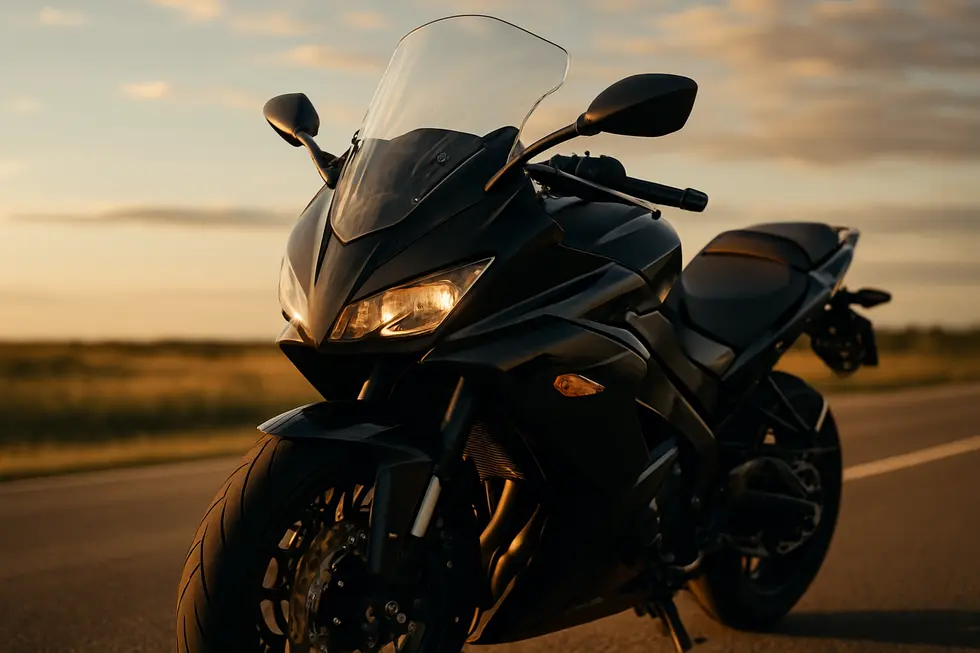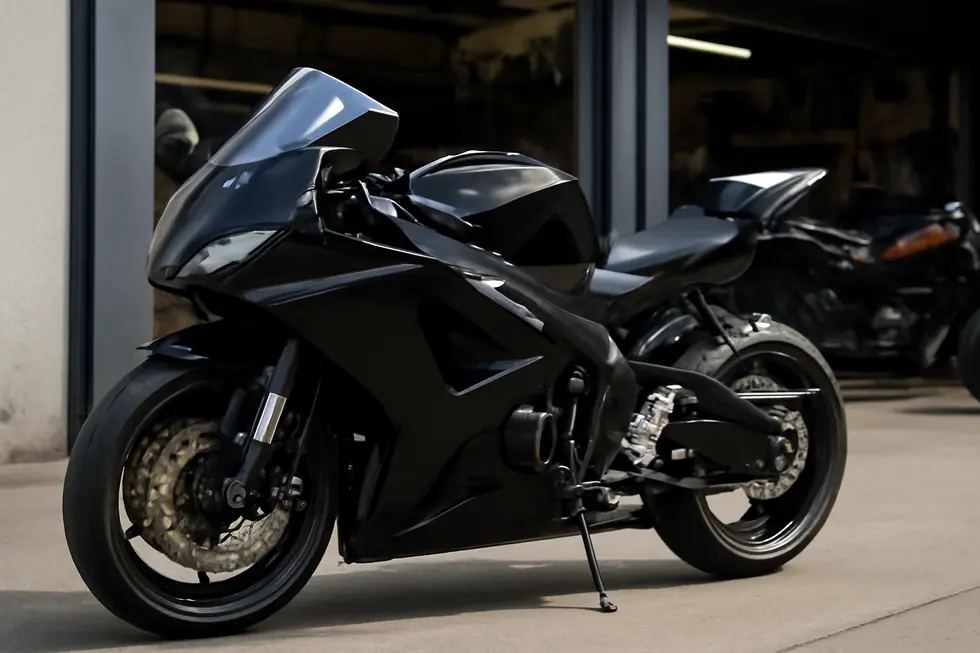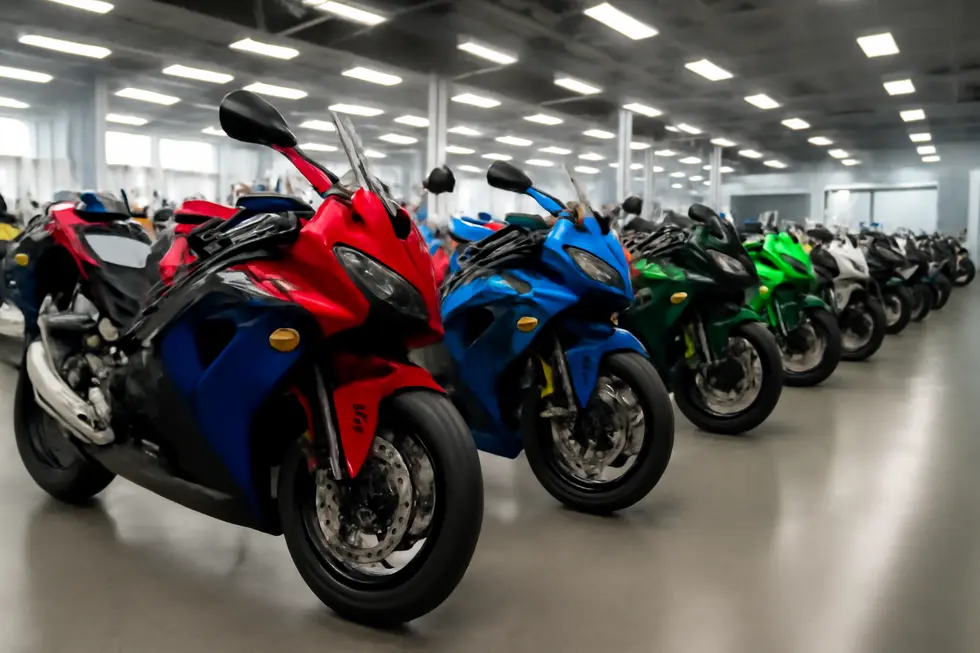Mastering Motorcycle Fairing Covers: A Business Guide to Materials, Performance, and Market Trends
October 6, 2025 | by summitfairings

Introduction
Motorcycle fairing covers play a pivotal role in the powersports industry, merging functionality with style to meet rider demands and market trends. These aerodynamic shells not only protect bikes and riders but also significantly influence performance, aesthetics, and brand identity. For business owners, understanding how fairings are manufactured, customized, and marketed offers a vital edge in product development and customer satisfaction. This comprehensive breakdown navigates key facets from materials and fabrication to advanced customization technologies, illustrating how each element integrates to elevate the value proposition of motorcycle fairing covers. Insight into aerodynamic principles, protective features, and brand-specific designs further highlights market opportunities and innovation potential in this dynamic segment.
Tables of Contents
Chapter 1: Materials and Manufacturing of Motorcycle Fairing Covers
- Choosing the Right Materials: Balancing Performance, Cost, and Technology in Motorcycle Fairings
- From Mold to Finish: Crafting High-Quality Motorcycle Fairing Covers
Chapter 2: Customization and Installation Techniques for Motorcycle Fairing Covers
- Mastering Installation: Essential Techniques for Seamless Motorcycle Fairing Customization
- Mastering Adhesive and Repair Techniques for Durable and Stylish Motorcycle Fairing Covers
Chapter 3: Aerodynamics and Performance Benefits of Motorcycle Fairing Covers
- Cutting-Edge Aerodynamic Innovations Driving Motorcycle Performance
- Enhancing Rider Comfort and Stability Through Aerodynamic Fairing Design
Chapter 4: Market Variety and Brand-Specific Motorcycle Fairing Covers
- Innovations Reshaping Materials and Technology in Brand-Specific Motorcycle Fairings
- How Economic Forces and Consumer Trends Shape Brand-Specific Fairing Cover Markets
Chapter 5: Protective Features and Functional Aspects of Motorcycle Fairing Covers
- Cutting-Edge Materials and Aerodynamic Advances Enhancing Motorcycle Fairing Protection and Performance
- Catalyzing Safety, Economy, and Community: The Far-Reaching Impact of Motorcycle Fairing Covers
Chapter 6: Advanced Technologies in Custom Motorcycle Fairing Covers
- Innovative Materials and Manufacturing Breakthroughs Elevating Custom Motorcycle Fairings
- Enhancing Style and Functionality: Customization, Finishing, and Installation Accessibility in Modern Fairing Covers
Chapter 1: Materials and Manufacturing of Motorcycle Fairing Covers
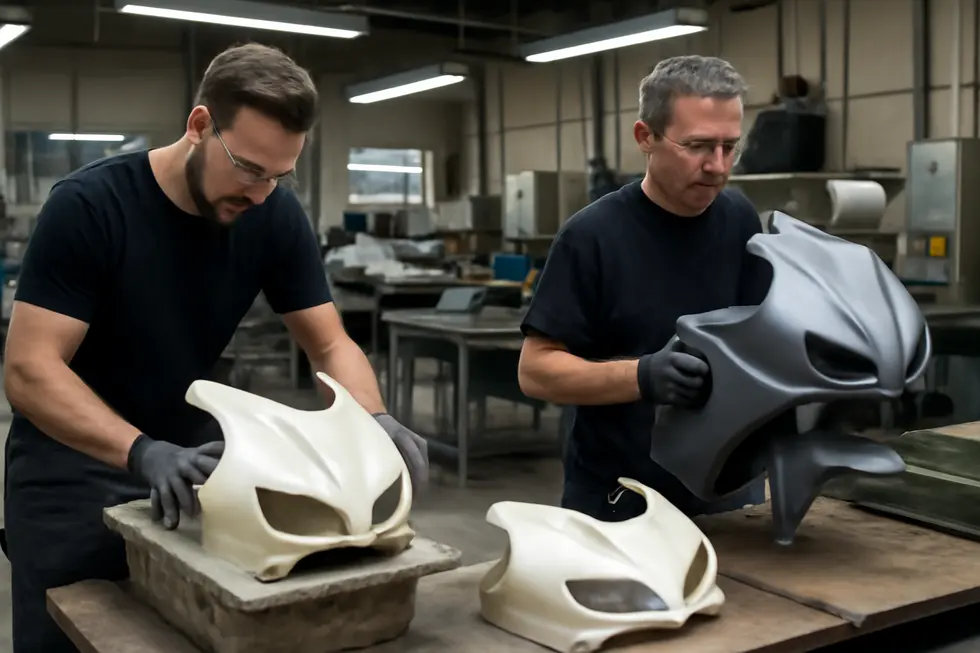
1. Choosing the Right Materials: Balancing Performance, Cost, and Technology in Motorcycle Fairings
Motorcycle fairing covers are engineered using a variety of materials, each selected to meet specific demands of durability, performance, and affordability. Commonly, manufacturers rely on ABS plastic, fiberglass, carbon fiber composites, and injection-molded plastics, balancing technological capabilities with economic feasibility and rider needs.
ABS plastic stands out for its versatility and cost-effectiveness. Its impact resistance and ease of molding make it the preferred choice for mass-produced motorcycle fairings. While heavier and less rigid than some alternatives, ABS offers robust protection against weather and everyday wear. Fiberglass, formed by layering polyester resin with glass fibers, is valued for its strong yet lightweight nature. This makes it popular for track and racing applications where repairability after minor crashes is crucial.
In contrast, carbon fiber composites deliver exceptional strength-to-weight ratios. Their superior stiffness and lightness translate to better handling and aerodynamics, significantly benefiting high-performance motorcycles. However, the material’s elevated cost confines its use to premium or competitive scenes. Injection-molded plastics provide smooth finishes and rapid manufacturing, supporting aftermarket fairings where consistent quality and fast production are priorities.
Emerging attention to sustainability introduces bio-based plastics, derived from renewable sources like corn, reflecting efforts to reduce environmental footprints without sacrificing performance. This trend aligns with the industry’s move toward greener materials.
Ultimately, selecting a motorcycle fairing’s material involves weighing factors such as weight, strength, repairability, cost, and ecological impact. While ABS and fiberglass dominate the everyday market, carbon fiber caters to riders prioritizing cutting-edge performance. For specific advice on maintenance and adhesives suitable for these materials, comprehensive resources such as detailed accessory blogs offer valuable guidance to maintain fairing integrity and appearance.
For more insight into high-quality fairing materials and their benefits, explore the diverse options available at summit fairings.
2. From Mold to Finish: Crafting High-Quality Motorcycle Fairing Covers
The production of motorcycle fairing covers begins with carefully chosen materials like ABS plastic or carbon fiber composites, both favored for their strength and flexibility. The primary manufacturing technique is injection molding, where molten plastic is forced under high pressure into highly precise metal molds, often crafted from aluminum or steel. These molds form the basic shape of the fairing components, ensuring consistency and exact fit for specific motorcycle models. This process demands meticulous engineering to capture every contour and aerodynamic design element.
Once molded, the pieces undergo rigorous quality control inspections. These inspections check for defects such as warping, cracks, or color inconsistencies to guarantee durability and a flawless finish. Proper fitment verification ensures the fairing covers mount securely on the bike, maintaining their aerodynamic advantages. Following inspection, finishing techniques like painting, decal application, and clear coating enhance the aesthetic appeal and protect the surface from environmental damage.
Assembly preparation involves applying reliable adhesives or fasteners designed for the material. Contact adhesives are widely used for ABS plastic due to their strong bonding capability but require thorough surface cleaning and precise application for long-lasting adhesion. This stage also demands accuracy to guarantee seamless integration with the motorcycle’s frame, preserving both protective qualities and aerodynamic efficiency.
The combined focus on material selection, molding precision, quality assurance, and expert finishing culminates in fairing covers that enhance performance, protection, and style. For riders seeking the best in fit and finish, understanding these manufacturing facets reveals the craftsmanship behind every durable cover.
For a deeper look into the assembly methods and adhesive options, explore this detailed guide on selecting the right glue for motorcycle fairings.
Chapter 2: Customization and Installation Techniques for Motorcycle Fairing Covers
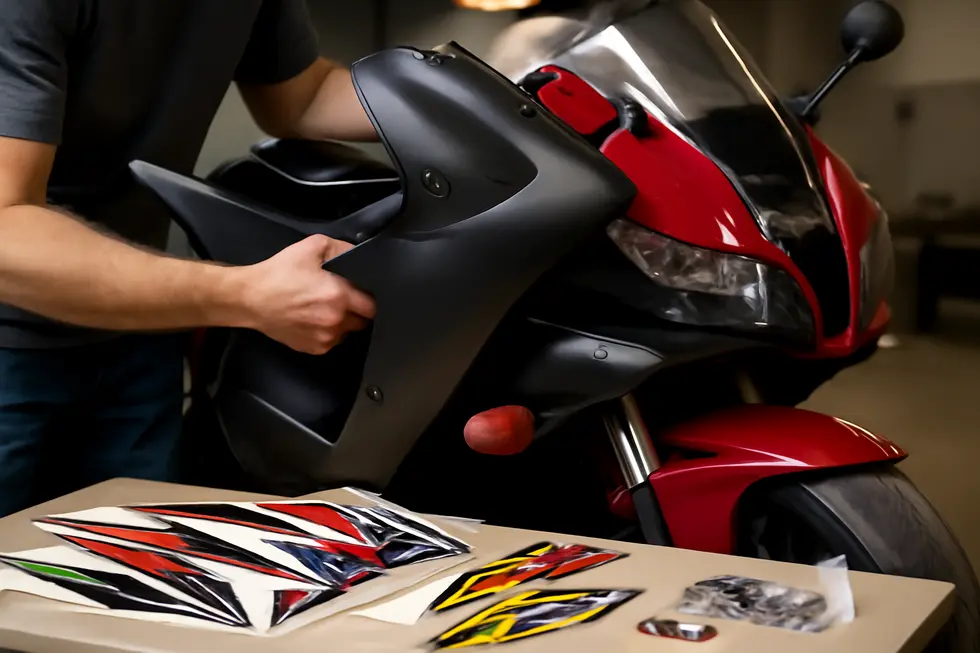
1. Mastering Installation: Essential Techniques for Seamless Motorcycle Fairing Customization
Proper installation of motorcycle fairing covers is crucial to achieving both durability and an appealing finish. The process begins with meticulous surface preparation—cleaning all mounting or bonding areas to remove dirt, grease, and any residue from previous adhesives. Only completely dry and contaminant-free surfaces ensure a strong, lasting connection. When adhesives like contact cement are employed, it is important to apply them evenly on both surfaces and allow them to reach a tacky state before joining. Precise alignment at this stage is essential because any repositioning can significantly weaken the bond. Firm and even pressure applied via clamps or rollers helps secure the bond during curing, which should follow the manufacturer’s recommended timeframes.
Mechanical mounting complements adhesive methods, often involving brackets, bolts, and protective measures to prevent paint damage. For example, installing a fairing panel before attaching lower brackets can reduce the risk of scratching from sharp edges. Stepwise assembly—carefully separating inner and outer skins if applicable, and installing mounts in an organized sequence—facilitates smoother fitting and lowers the chance of costly errors.
Customization extends beyond mounting, including painting and finishing fairings prior to installation for enhanced aesthetics and protection. Many custom parts integrate plug-and-play features like LED turn signals, simplifying both installation and electrical hookup. Using specialized hardware designed for specific motorcycle models ensures that additional accessories such as passenger pegs or sissy bars attach securely and align perfectly with existing mounts.
Successful installation balances thorough preparation, adept handling, and adherence to detailed instructions. For those seeking guidance, resources like the Summit Fairings blog offer comprehensive advice on adhesive techniques and installation best practices, helping riders achieve flawless customization and confident performance on the road.
2. Mastering Adhesive and Repair Techniques for Durable and Stylish Motorcycle Fairing Covers
Mastering Adhesive and Repair Techniques for Durable and Stylish Motorcycle Fairing Covers
The integrity of motorcycle fairing covers largely depends on effective adhesive and repair methods, especially when customizing or restoring these essential components. Fairings are often crafted from plastics or composites like ABS or fiberglass, demanding adhesives that bond strongly while withstanding vibrations, weather conditions, and mechanical stress experienced during rides. Contact adhesives stand out as the preferred solution, as they form an immediate, robust bond once both surfaces are coated, dried to a tacky state, and aligned precisely. The instant bonding nature means that proper surface preparation is non-negotiable—surfaces must be pristine, free of dirt, grease, and prior residue, and completely dry to ensure maximum adhesion.
Applying adhesives with uniform coverage is critical; using brushes, rollers, or sprays allows for even distribution, especially on curved surfaces typical in fairing designs. When using spray adhesives, adequate ventilation and protective gear mitigate health risks. Once mated, fairing pieces require firm, consistent pressure—achieved with clamps or rollers—to strengthen the bond as it cures, following manufacturers’ drying timelines to guarantee long-term durability.
Beyond structural repairs, adhesives enhance customization through graphic applications and wrapping films. High-quality polymeric adhesive graphics tailored to exact motorcycle models provide striking, bubble-free finishes thanks to advanced air-release technology in the adhesive layers. Similarly, wrap films offer a removable, protective, and stylish layer that preserves underlying paintwork, ideal for riders seeking frequent aesthetic updates without permanent modifications.
Still, adhesives do not replace mechanical fasteners; screws, bolts, and mounting brackets remain essential to secure fairings firmly and maintain precise alignment during installation or after repairs. Combining these techniques ensures that motorcycle fairing covers not only look exceptional but endure the rigors of riding. For detailed adhesive and repair guidance, exploring expert resources dedicated to motorcycle fairings can further refine these skills, enabling riders and technicians to achieve professional-quality results.
For more insights on choosing and applying fairings with ease, visit this comprehensive guide on explore the best motorcycle fairings at Summit Fairings.
Chapter 3: Aerodynamics and Performance Benefits of Motorcycle Fairing Covers
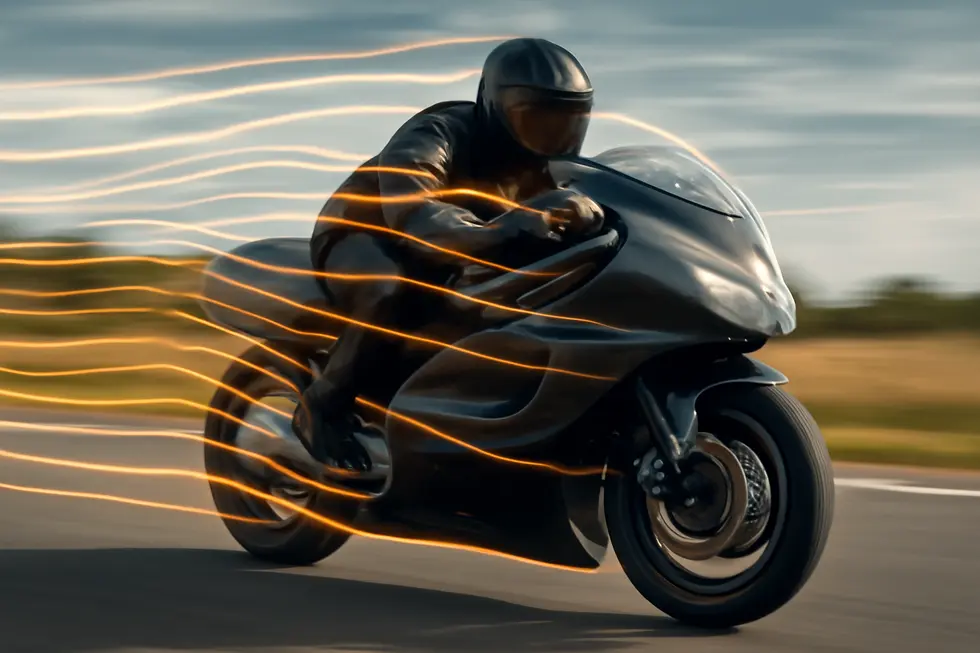
1. Cutting-Edge Aerodynamic Innovations Driving Motorcycle Performance
Technological innovation has revolutionized the aerodynamic performance and functional benefits of motorcycle fairing covers. Modern designs focus on optimizing airflow to reduce drag and increase stability, which translates directly into higher acceleration, improved cornering, and greater top speeds. For example, reshaped components that transition from squared to rounded profiles drastically minimize air resistance around critical areas such as the rear wheel, facilitating smoother airflow and enhancing overall bike agility.
The integration of advanced lightweight materials like carbon fiber has become essential, allowing for significant weight reduction without compromising strength or precision fit. These materials enable rapid prototyping and iterative design improvements, pushing the boundaries of responsiveness and handling in both racing and street motorcycles. Additionally, upgraded hot-air exhaust outlets embedded within the upper fairings efficiently manage engine and radiator heat. This heat dissipation is critical in maintaining peak performance, preventing overheating during rigorous riding conditions.
A standout development is the application of aerodynamics inspired by ground effects and winglets, which generate crucial downforce. By manipulating air pressure beneath the bike during lean angles, these features press the motorcycle closer to the road, markedly improving cornering grip and reducing the risk of front-end lift. These innovations, initially honed in elite motorsport series, now enhance street-ready motorcycles by improving braking stability and acceleration control.
Fully faired electric motorcycles demonstrate how comprehensive aerodynamic refinement also contributes to energy efficiency, minimizing drag to extend battery range and reduce rider fatigue. Similarly, high-performance bikes employ carbon fiber fairings combined with aerodynamic research to meticulously balance weight and airflow for ultimate speed and precise handling.
Together, these technological advances enable fairing covers to do far more than protect or stylize motorcycles—they serve as key components that elevate the machine’s performance envelope. For those seeking to explore the full scope of fairing innovations and styles, resources like Summit Fairings offer extensive insights into how cutting-edge aerodynamics are shaping motorcycle design today.
2. Enhancing Rider Comfort and Stability Through Aerodynamic Fairing Design
Motorcycle fairing covers play a crucial role in elevating both rider comfort and motorcycle stability by expertly managing airflow around the bike. By directing air smoothly over the motorcycle and rider, fairings significantly reduce drag and turbulent wind pressure that often causes fatigue and instability. This aerodynamic advantage lessens the direct force of wind against the rider’s body, which reduces strain on the arms and torso during longer rides or at high speeds. Consequently, riders experience less fatigue and greater endurance, allowing for safer and more enjoyable journeys.
Beyond comfort, fairings enhance stability by controlling airflow to prevent unwanted wobbling and buffeting caused by crosswinds. A well-designed fairing maintains predictable aerodynamic characteristics during cornering, enabling a motorcycle to respond precisely to rider inputs. This predictability fosters confident handling, allowing sharper and more controlled turns. Advanced fairing designs incorporate additional features such as winglets and specialized air inlets and outlets. These elements balance downforce and engine cooling, further stabilizing the bike under demanding conditions and at elevated speeds.
In terms of performance, smoother airflow directly improves acceleration and top speed by reducing aerodynamic resistance. This advantage means the engine expends less power overcoming drag, which is especially beneficial for electric motorcycles by extending battery range and operational efficiency. Composite materials commonly used in racing fairings maximize this effect by delivering both lightweight strength and aerodynamic precision. Such materials protect internal components while enhancing speed and control.
Together, these aerodynamic enhancements provided by motorcycle fairing covers create a more comfortable, stable, and performance-optimized riding experience. For riders seeking both practical benefits and improved confidence on the road, investing in high-quality fairings ensures a noticeable difference in handling and endurance. For additional insights into quality and customizable motorcycle fairings, explore the comprehensive options available at Summit Fairings.
Chapter 4: Market Variety and Brand-Specific Motorcycle Fairing Covers
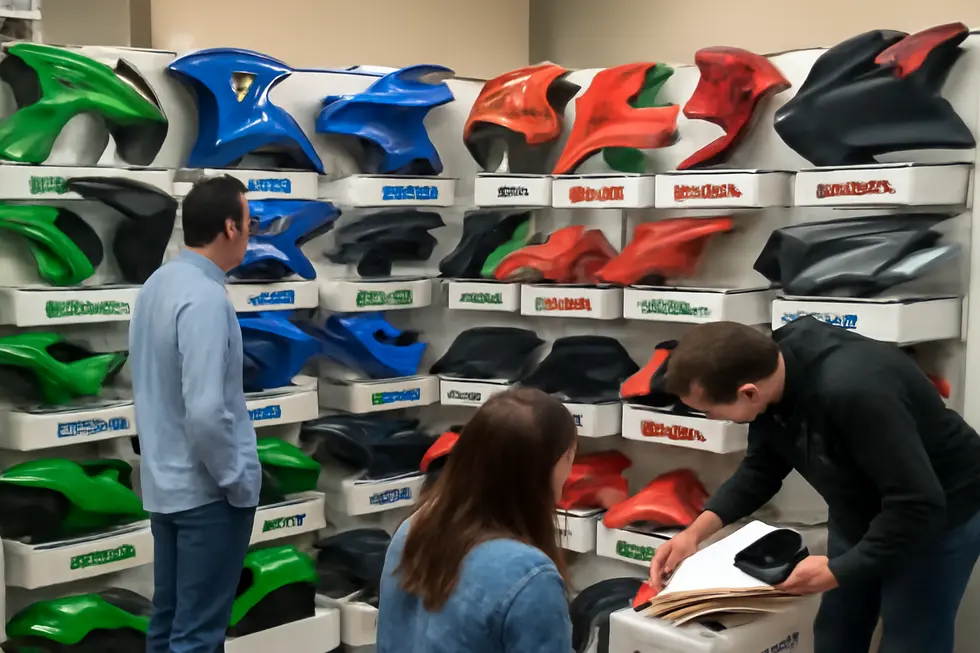
1. Innovations Reshaping Materials and Technology in Brand-Specific Motorcycle Fairings
Motorcycle fairing covers are evolving rapidly due to breakthroughs in material science and manufacturing technologies, broadening the market variety while refining brand-specific fit and functionality. Traditional materials like ABS and polypropylene plastics still dominate due to their resilience, ease of molding, and affordability. However, premium applications increasingly favor carbon fiber, prized for its exceptional strength-to-weight ratio and sleek appearance. This shift allows riders seeking high-performance upgrades to balance lightweight properties with durability, even if costs are notably higher.
Advancements in injection molding techniques enable manufacturers to produce intricate fairing shapes with improved precision and consistency. This sophistication results in more exact OEM fitment for specific models and allows incorporation of aerodynamic features such as winglets and wind deflectors that improve stability and reduce drag. These integrated designs enhance both the motorcycle’s performance and visual dynamics, amplifying the appeal for enthusiasts seeking style coupled with functionality.
The market reflects growing consumer demand for customization alongside exact fits. Brand-specific fairing sets often come factory-painted in model-exclusive color schemes, preserving the authentic look while offering upgrades in durability. This precision contrasts with universal kits that provide budget-friendly, adaptable options but may require modifications for optimal fit. Suppliers worldwide quickly adapt to new model introductions and color trends, supported by global supply chains that streamline access to diverse options.
As personalization trends grow, riders benefit from a wide spectrum of choices—from full replacement kits engineered for specific motorcycles to individual pieces that complement or enhance aesthetics and protection. These innovations in materials and technology are pivotal in shaping the expanding market variety of brand-specific fairing covers.
For more insights into the broad options available in motorcycle fairings, explore this detailed collection at Summit Fairings.
2. How Economic Forces and Consumer Trends Shape Brand-Specific Fairing Cover Markets
The landscape of motorcycle fairing covers is deeply shaped by a complex interplay of economic conditions and evolving market preferences. Production costs play a pivotal role, as manufacturers rely heavily on durable materials such as ABS plastic, which, while more expensive, provide resilience and precise fits that riders expect. These higher costs directly affect retail prices and push brands to maintain quality, fueling consumer expectations for long-lasting, OEM-equivalent fairings. Beyond cost considerations, customization demand has surged, with riders seeking unique visual styles, tailored color schemes, and model-year-specific fairings. This desire amplifies the variety available and drives brands and aftermarket suppliers to offer nuanced, brand-specific designs that preserve the motorcycle’s original identity. Localization of manufacturing also influences availability and pricing. Establishing production facilities in emerging markets not only curtails costs but enhances supply chain efficiency, enabling faster and more affordable access to fairing covers suited to regional models. Concurrently, global trends such as electrification and sustainability push manufacturers toward innovative materials and adaptable designs that align with changing motorcycle architectures and performance requirements. Regional consumer preferences further differentiate the market; in places like North America, emphasis on larger displacement bikes with comfort and aerodynamic optimization mold fairing cover design and material choices. Furthermore, customer perceptions of brand reliability and ease of maintenance impact aftermarket engagement, often steering riders toward original manufacturer-compatible fairings for trusted durability. These interwoven factors create a vibrant, varied marketplace where economic realities meet consumer aspirations, delivering a broad spectrum of high-quality, brand-tailored motorcycle fairing covers worldwide. For a detailed exploration of available options catering to diverse rider needs, consider exploring the extensive range featured at Summit Fairings.
Chapter 5: Protective Features and Functional Aspects of Motorcycle Fairing Covers
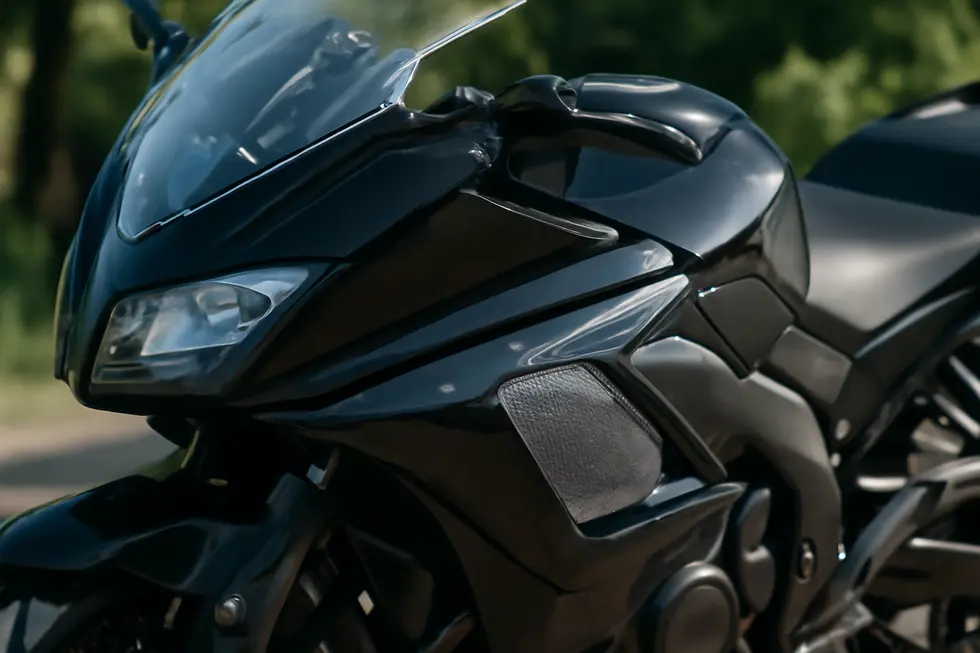
1. Cutting-Edge Materials and Aerodynamic Advances Enhancing Motorcycle Fairing Protection and Performance
Motorcycle fairing covers have seen remarkable technological advancements that elevate both protection and functional efficiency. At the forefront is the integration of innovative materials like carbon fiber and ABS plastic, each chosen for its unique strengths. Carbon fiber stands out for its exceptional strength-to-weight ratio, offering superior durability while significantly reducing weight. This characteristic plays a crucial role in improving a motorcycle’s aerodynamics and dynamic stability, especially at high speeds and through tight corners. Meanwhile, ABS plastic is prized for its toughness and flexibility, able to absorb impacts without cracking, thus providing lasting protection against road debris and minor collisions.
Beyond materials, modern fairings are designed with advanced aerodynamic principles that optimize airflow around the motorcycle. These designs employ ground-effect aerodynamics to manipulate air pressure, effectively increasing grip and stability on straights and during cornering. Aerodynamically sculpted fairings also act as wind deflectors, substantially reducing rider fatigue by minimizing wind turbulence and buffeting during extended rides. This balance of form and function enhances both the rider’s comfort and the bike’s overall performance.
Customization has also advanced, allowing riders to personalize not only the aesthetic aspects of their fairings — such as special colors and graphics — but also integrate cutting-edge electronic systems. These systems can include controls for traction and power delivery, often managed via compact ECUs embedded within the fairing’s design. This seamless integration contributes to improved ride control and adaptable performance settings without compromising structural integrity.
The diversity of available fairing components has expanded dramatically as well, facilitated by global supplier networks that offer extensive options tailored for nearly every popular motorcycle model. This ensures riders can select fairings that fit precisely while meeting their personal demands for protection, style, and aerodynamic enhancement. Collectively, these technological strides in materials, aerodynamics, and customization define the modern motorcycle fairing cover as an indispensable component that blends protection with high-performance functionality.
For riders interested in exploring the wide variety of advanced fairing options, discover affordable motorcycle fairings at Summit Fairings offers valuable insights and resources.
2. Catalyzing Safety, Economy, and Community: The Far-Reaching Impact of Motorcycle Fairing Covers
Motorcycle fairing covers play a pivotal role beyond their immediate protective and aerodynamic functions—they significantly influence economic vitality and societal well-being. Economically, these covers, often crafted from advanced thermoplastics like ABS or polypropylene, offer a balance of durability and affordability that benefits both manufacturers and riders. Manufacturers reduce production costs by using materials that deliver strength without heavy expense, enabling a competitive edge in a thriving aftermarket marketplace. Riders likewise gain, with accessible replacement kits that lower maintenance expenses and minimize motorcycle downtime, crucial for daily users and professionals alike, sustaining productivity and reducing indirect financial loss.
This industry’s ripple effect is noticeable at a broader scale. Motorsports, which rely heavily on well-designed fairing covers, generate substantial economic output—supporting manufacturing jobs and stimulating sectors such as logistics, retail, and insurance tailored for motorcyclists. Moreover, the surge in customizable fairings fosters business in specialized shops, blending craftsmanship with consumer identity.
On the societal front, the protective features embedded in fairings enhance rider safety by reducing injuries from debris or minor crashes, aligning with public health goals and alleviating the medical system’s burden. Comfort innovations—like wind deflection and heat shielding—reduce fatigue, encouraging safer, longer rides. These improvements actively promote safer riding practices and contribute to a culture of cautious enjoyment. Additionally, the aesthetic customizations available allow riders to express individuality and foster a strong community bond, enriching social connections within motorcycle culture.
Functionally, aerodynamic advances in fairings improve fuel efficiency, indirectly supporting environmental efforts by lowering emissions. This intersection of technology, economy, and lifestyle reinforces fairing covers as vital elements not just for performance but also for economic growth, social safety, and cultural expression. For those interested in a deeper dive into practical maintenance and repair, resources on adhesive techniques offer valuable insights into preserving these crucial components (explore Summit Fairings blog).
Chapter 6: Advanced Technologies in Custom Motorcycle Fairing Covers
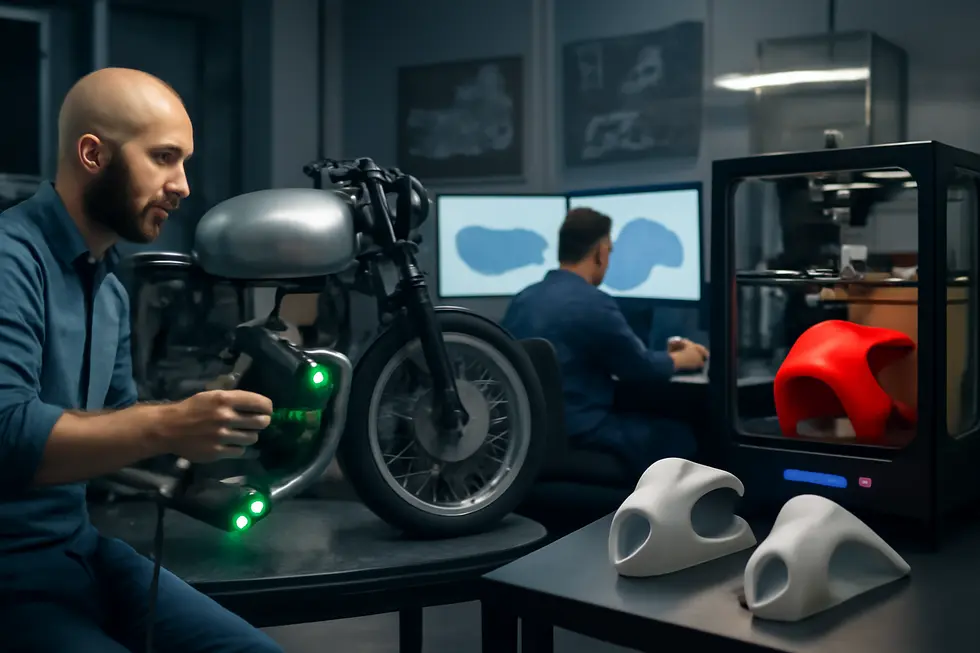
1. Innovative Materials and Manufacturing Breakthroughs Elevating Custom Motorcycle Fairings
The evolving landscape of custom motorcycle fairing covers is marked by remarkable innovations in both materials and manufacturing methods that refine durability, performance, and aesthetic appeal. Central to this progression is the adoption of high-performance materials such as premium ABS plastic, carbon fiber, and fiberglass. ABS plastic remains a reliable staple due to its resistance to heat, vibration, and impact, complemented by its compatibility with professional UV-resistant paints that ensure a lasting, vibrant finish. Carbon fiber, prized for its exceptional strength-to-weight ratio, offers lightweight protection favored in high-end custom kits, delivering enhanced speed and handling without compromising toughness. Meanwhile, fiberglass balances cost-effectiveness with adequate strength and weight, making it a popular choice for many custom applications.
On the manufacturing front, advances like injection molding create exceptionally precise fairing components. Utilizing long-lasting, ISO-certified molds, this technique ensures consistent fitment and a high-quality surface finish across numerous production runs. More recently, additive manufacturing, or 3D printing, has introduced unparalleled flexibility by enabling rapid prototyping and fabrication of intricate, bespoke parts that traditional methods struggle to produce. This technology facilitates tailored designs with complex geometries, allowing riders and fabricators to push the boundaries of both form and function.
Additional innovations have emerged in adhesives and coatings, where the fusion of polymer chemistry and nanotechnology yields bonds that combine strength and flexibility to endure road vibrations and impacts. UV-resistant paints and protective films further enhance fairings, guarding against environmental wear while supporting elaborate custom graphics and designs. These material and manufacturing breakthroughs collectively empower riders and custom shops to achieve superior quality, personalized styling, and optimized performance in their motorcycle fairing covers.
For further exploration of material and manufacturing highlights shaping custom fairings, consider valuable insights from reputed suppliers and industry trends detailed in sources like Explore the Best Motorcycle Fairings at Summit Fairings.
2. Enhancing Style and Functionality: Customization, Finishing, and Installation Accessibility in Modern Fairing Covers
Customization, finishing, and installation accessibility form the backbone of advanced technologies shaping today’s custom motorcycle fairing covers. Riding enthusiasts now enjoy unprecedented freedom to express their individuality while benefiting from robust, performance-driven enhancements. Customization options have evolved far beyond basic color swaps; manufacturers provide tailor-made kits that replicate OEM precision or showcase bold, individual graphics. Riders can select from premium materials like ABS plastic, fiberglass, or carbon fiber, each offering distinct tactile and durability qualities that influence price and style. These materials support intricate designs, ensuring a seamless fit that complements the motorcycle’s model and personal aesthetic.
The finishing process is equally critical. Using professional paint applications with UV-resistant coatings preserves vibrant colors and gloss while shielding surfaces from harsh weather and road debris. Modern adhesives leverage cutting-edge polymer chemistry and nanotechnology to produce flexible yet ultra-strong bonds, maintaining perfect adhesion amid engine vibrations, temperature shifts, and exposure to fuels or cleaners. These adhesives often permit repositioning during installation, allowing users to achieve flawless alignment on contoured shapes. Complementary protective layers, such as paint protection films or epoxy-polymer blends, add another dimension of scratch resistance and longevity.
Accessibility is a defining advantage of contemporary fairing cover technologies. Many custom kits are designed for rapid, hassle-free assembly—often installable in under 30 minutes—thanks to features like pre-drilled holes, modular components, and repositionable bonding agents. This user-friendly approach removes much of the complexity traditionally associated with custom fairings, making high-level customization achievable even for riders with limited mechanical experience. Global shipping and reliable delivery services further enhance accessibility, putting advanced fairing solutions within reach of motorcycle enthusiasts worldwide. While installation of aftermarket covers may impact warranty conditions, these effects are generally limited and depend on direct installation consequences.
Together, these innovations enable riders to enhance their motorcycle’s aerodynamic performance, protection, and visual identity with ease and confidence. For riders interested in exploring a wide selection of high-quality custom fairings combining these technologies, seeing how professional suppliers integrate such features can provide valuable insights into the evolving landscape of motorcycle customization. Learn more about these advancements at your ultimate source for affordable motorcycle fairings.
Final thoughts
Motorcycle fairing covers represent a crucial intersection between engineering, performance enhancement, and aesthetic appeal within the powersports industry. For business owners, mastery of the materials and manufacturing processes ensures the delivery of durable, high-quality products that align with rider expectations. Coupled with effective customization and installation techniques, these covers enable personalized solutions that further engage customers. The aerodynamic and protective attributes not only improve ride stability and safety but also elevate a brand’s standing through enhanced functionality. Navigating the diverse market landscape with brand-specific offerings sharpens competitive edge while embracing advanced technologies like 3D scanning and prototyping positions businesses at the forefront of innovation. These layered insights form a holistic perspective to strategically develop, market, and sell motorcycle fairing covers that meet evolving demands and drive sustained business success.
Ready to elevate your ride? Summit Fairings delivers premium, custom-fit fairings that blend style and durability. Whether you’re chasing speed or turning heads, we’ve got your bike covered. Don’t wait—transform your machine today. Click, customize, and ride with confidence. Your perfect fairing is just a few clicks away. Act now!
About us
undefined
RELATED POSTS
View all

